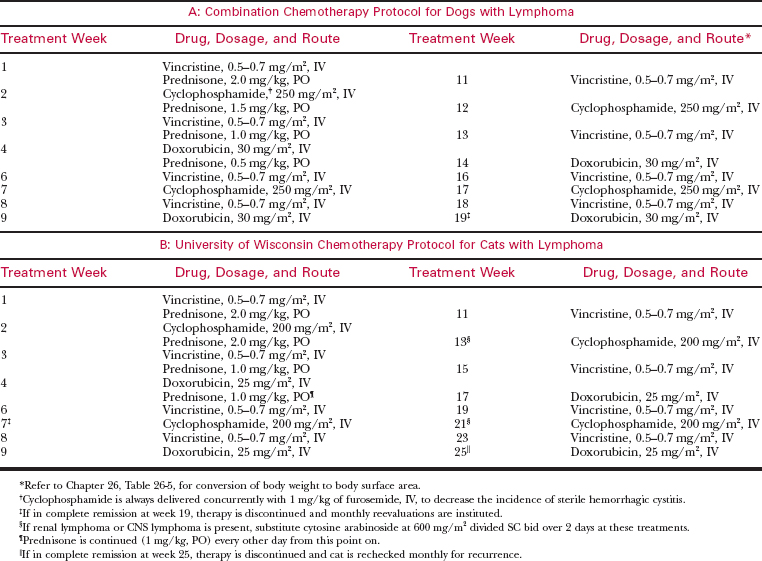Chapter 27 Lymphoid Neoplasia
The lymphoproliferative disorders presented here are characterized by neoplasia involving cells or cell lines of lymphoid origin, including lymphoma, lymphoid leukemia, multiple myeloma, and plasmacytoma. Because of differences in diagnosis, therapy, and prognosis among these conditions, they are discussed here as separate entities.
LYMPHOMA
Classification and Clinical Signs
World Health Organization (WHO) clinical staging of lymphoma also can be used to classify the extent of the disease (Table 27-1).
Table 27-1 WORLD HEALTH ORGANIZATION CLINICAL STAGING FOR LYMPHOMA*
| Stage† | Criteria |
|---|---|
| I | Involvement limited to single lymph node or lymphoid tissue in a single organ (excluding bone marrow) |
| II | Involvement of many lymph nodes in regional area (with or without tonsils) |
| III | Generalized lymph node involvement |
| IV | Liver and/or spleen involvement (with or without stage III) |
| V | Manifestations in blood and involvement of bone marrow and/or other organ systems (with or without stages I–IV) |
* Reprinted with permission from World Health Organization: Owen LN: TNM Classification of Tumors in Domestic Animals. Geneva: WHO, 1980.
† Each stage is subclassified into (a) without systemic signs and (b) with systemic signs.
Diagnosis
Physical Examination
Perform a complete physical examination for all animals with lymphoma.
Laboratory Evaluations
Hematologic Abnormalities
Biochemical Abnormalities
Radiography and Ultrasonography
Radiography and ultrasonography (see Chapter 4), although not diagnostic for lymphoma, are often useful for staging or determining the extent of disease.
Histopathology and Cytology
Additional Diagnostic Tests
Additional tests may be necessary to confirm the diagnosis of the extranodal forms of lymphoma.
Stay updated, free articles. Join our Telegram channel

Full access? Get Clinical Tree



